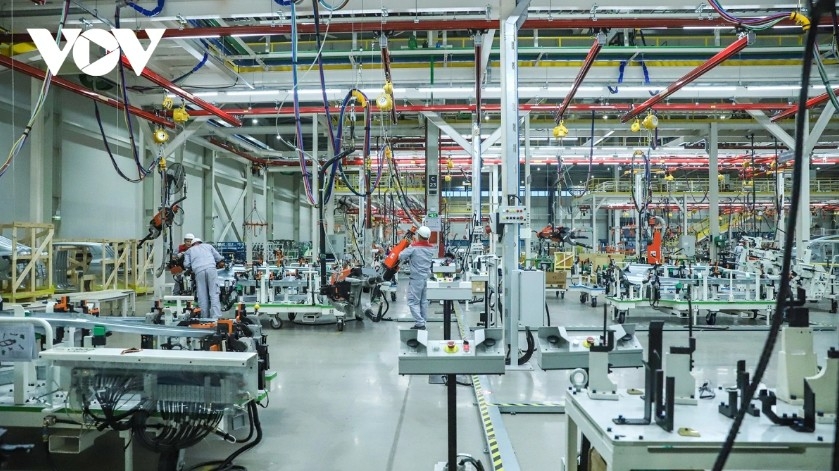Key drivers behind Vietnam’s 8% GDP growth target
VOV.VN - To achieve the GDP growth target of 8.3-8.5% in 2025, the Vietnamese Government needs to maintain macroeconomic stability while revitalizing traditional growth drivers and promoting new momentum.

According to the General Statistics Office (GSO) under the Ministry of Finance, GDP in the third quarter of 2025 is estimated to have risen by 8.23% year on year, bringing the nine-month increase to 7.84%. This is one of the highest growth rates during 2011-2025, second only to 9.44% recorded in the same period of 2022. To meet the full-year goal, fourth-quarter growth must reach around 8.4-8.5%, a major challenge amid global economic uncertainties.
Public investment, exports and consumption remain key growth engines
Nguyen Thi Huong, GSO Director General said the three pillars of growth- public investment, exports and consumption- need timely support with a focus on quality and efficiency.
Public investment disbursement still has room for improvement and should prioritize key projects while linking responsibilities with local authorities and investors to create spillover effects in the fourth quarter.
Regarding exports, Huong emphasized the need to enhance product value through innovation, R&D investment, market expansion and stronger digital trade promotion.
Sharing the same view, economist Can Van Luc, a member of the Prime Minister’s Economic Advisory Council, assessed that Vietnam’s economy is on a fairly solid recovery path. Traditional growth drivers remain stable and are expanding as expected. Specifically, domestic consumer demand has rebounded, exports, though slowing, continue to improve, while services, particularly tourism, accommodation, food and beverage, logistics, education, and training, are all posting positive growth.
He stressed that the three main growth pillars -consumption, public investment and exports -should be reinforced in a way that builds long-term foundations rather than relying on short-term measures.
At the same time, emerging drivers such as the digital economy, green economy, circular economy, energy transition and institutional reforms, including streamlined administrative structures, are becoming increasingly important to growth.
Domestic demand seen as a key accelerator

Domestic spending is viewed as the main “accelerator” for growth at a time when exports and public investment are under pressure. The Ministry of Industry and Trade expects total retail sales of goods and consumer service revenue to surge in the fourth quarter during the peak shopping and travel season.
To achieve the annual growth target of around 12% in total retail sales of goods and consumer service revenue, localities and businesses are urged to speed up stimulus programs with direct support measures that benefit consumers.
Economist Nguyen Minh Phong stressed that the domestic market not only serves as a “testing ground” for Vietnamese products before reaching international markets but also offers substantial growth potential. This requires businesses to accelerate digital transformation in retail, expand distribution channels, and improve product quality and customer service.
Macroeconomic stability remains key condition
Associate Professor Pham The Anh, Dean of the Faculty of Economics at the National Economics University, said Vietnam needs appropriate macroeconomic policies to leverage internal resources and mitigate risks stemming from global instability. Fiscal policy should focus on promoting long-term growth and ensuring public debt sustainability, while monetary policy should prioritize inflation control, liquidity and credit flows to priority sectors.
He emphasized that all growth-supporting measures must be based on macroeconomic stability, market discipline and productivity gains. Fiscal and monetary policies should be transparent and predictable, thus enabling businesses and citizens to make long-term decisions with confidence.
Many economists also noted that the current domestic and global context requires Vietnam to act cautiously in its policy management while remaining steadfast in the goal of maintaining macroeconomic stability. All growth-supporting policies must be grounded in macroeconomic stability, ensuring market discipline, and improving labor productivity and capital efficiency.



